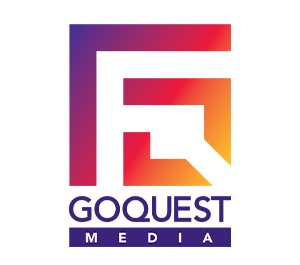Understanding Branded Content
Marketing is no longer about the stuff that you make, but about the stories you tell. - Seth Godin

With the explosion of video platforms and availability of affordable mobile broadband, video content has become an important part of a brands marketing communication strategy. The State of Video Marketing 2018 report by Wyzowl mentions that 83% consumers would consider sharing a branded video with their friends that they enjoyed, while 85% people maintain that they would like to see more videos from brands in 2018. Nielsen highlights that branded content enjoys higher brand affinity than ads.

Image Courtesy: Nielsen
With every brand, marketer and media company adopting branded content as part of their business service or marketing strategy, the meaning and definition of branded content has gained several interpretations. Branded content can be seen as a long form of content, mostly in audio-visual format, in which the content (story) is woven around the brand. The primary purpose of the story is driven not by the idea to sell the company’s product but to exhibit the value and DNA of its brand in an entertainment manner. It can be seen as a mini-movie of a brand, adopting film-making techniques and cinematic language – opening credits, story centering on individuals, narrative with a beginning, middle and an end, high production value and entertainment quotient.
Its objective is to resonate with audience on an emotional and psychological level. This has been proved by the success of Transformers series, The Lego Movie and Marvel Cinematic Universe, which can be considered as long-format audio-visual content of the product.
A word commonly used by companies to emphasize their branded content strategy is ‘storytelling’, which is generally associated with entertainment industry. Storytelling has been the means adopted by our species since centuries to communicate ideas and thoughts. As it is central to gaining a deep understanding of consumer psychology (Escalas & Stern, 2003; Holt, 2004), companies are implementing storytelling to attract consumers. Authors and academicians Arch G. Woodside, Suresh Sood and Kenneth E. Miller illustrate in their article that people naturally think narratively rather than argumentatively or paradigmatically. This conclusion is demonstrated in the 2001 BMW campaign, The Hire, an episodic series of eight short fiction films of action genre, considered the beginning of modern branded content by academicians and marketers (Russell, 2007; Pino and Olivares, 2007; Lehu, 2009; Tuomi, 2010; Martí, 2010; Regueira, 2012).
The campaign demonstrated two interesting aspects. First, instead of adopting the traditional form of distribution through television networks, the films were distributed directly online through the company-created and owned website, bmwfills.com and online streaming company YouTube, thereby giving direct access of content to audience. Second, with the links of the film being shared and sent to family and friends, the flow of communication changed from vertical (characterized by top-down approach) to horizontal, developing a two-way process. Though the final result was to sell the car, the core purpose of the campaign was to communicate the value of the BMW brand.
This paradigm shift in marketing communication is attributed to the emergence of new media and advancement of technology. The democratization of media led by popularity of social media has enabled users to access and share content. It has provided an alternate route to the brands to skip the traditional distribution model and reach their consumers directly at zero distribution cost. But ad-blocking software, accompanied by increase in the consumption of video-on-demand (VOD) content, popularized by online video streaming services like Netflix and Amazon, enabled the audience to enjoy their content without the interruption of ads. The only possible way for the brands to get to the audience was that “if they delivered Hollywood-level creative at internet speed, they could gather huge engaged audiences around their brands. Thus was born the great push toward branded content” (Holt, 2016) with marketers needing to “think” and “act like publishers” (Satell, 2016). This meant to have greater accountability, authenticity and transparency of their content. The changing landscape of media and communication and the need to be more real and authentic witnessed the co-existence and co-dependence of editorial (publishers) and brands (advertisers).
The creation of video content was a function of a media company earlier. Now traditional publishing companies (The Economist, The New York Times, National Geographic and BBC) and non-media companies, including automobile (BMW Films) and FMCG (Pepsi Productions, Red Bull Media House) have either established their own in-house production unit or developed contract partnership with film production companies (Temple Hill Productions, known for films Twilight and Fault In Our Stars, was production partner of Pepsi for Uncle Dew) for complete ownership and control on the content. By creating their own content, non-media companies extended their role as a production or an entertainment company, creating new revenue model by selling their content to distribution networks (who benefit from accessibility to the brand’s loyal audience community), inferring that content is the new currency. This submergence of roles is what American scholar and professor, Henry Jenkins, termed as Convergence Culture, leading The Economist to ask the fundamental question – So what is a media company?
